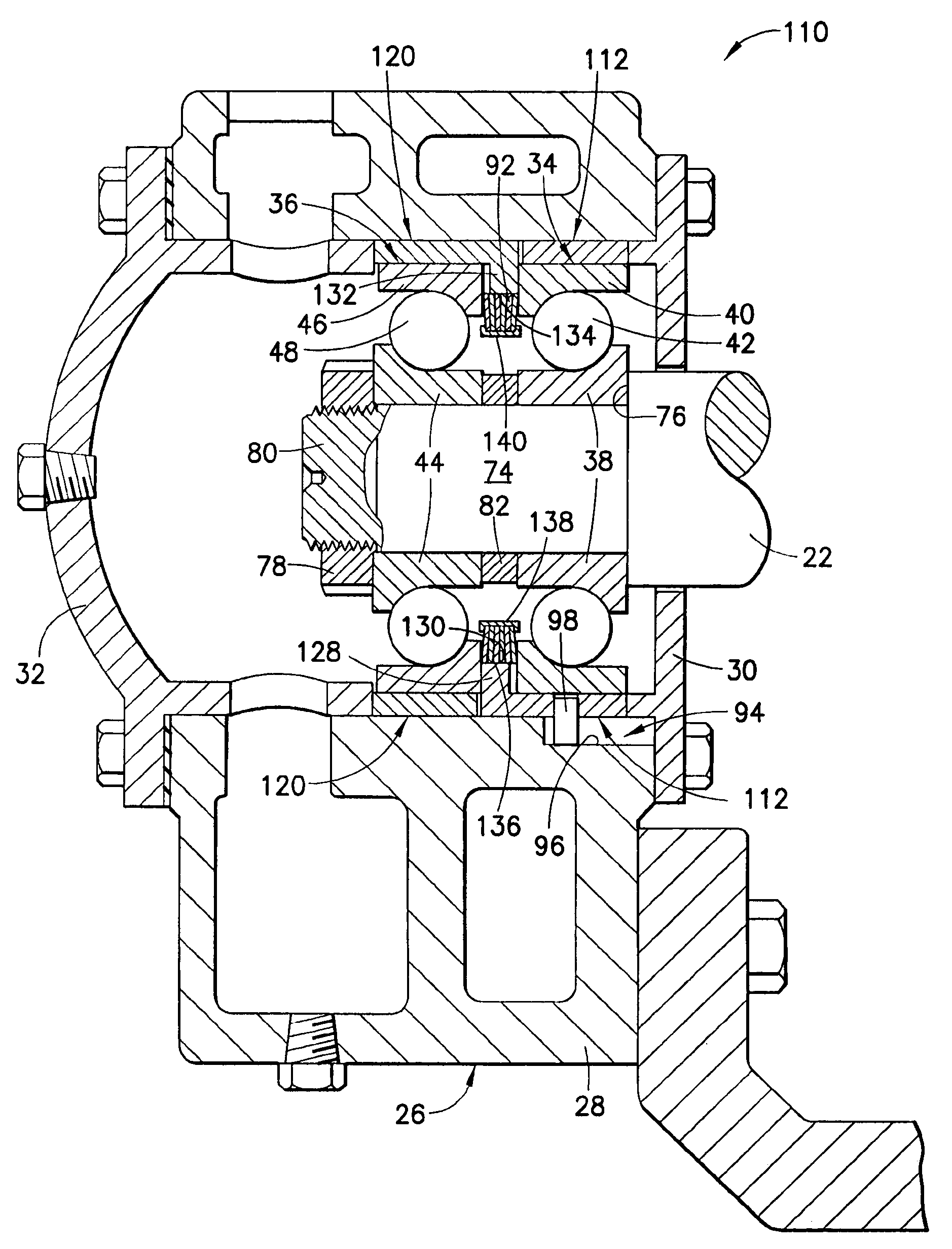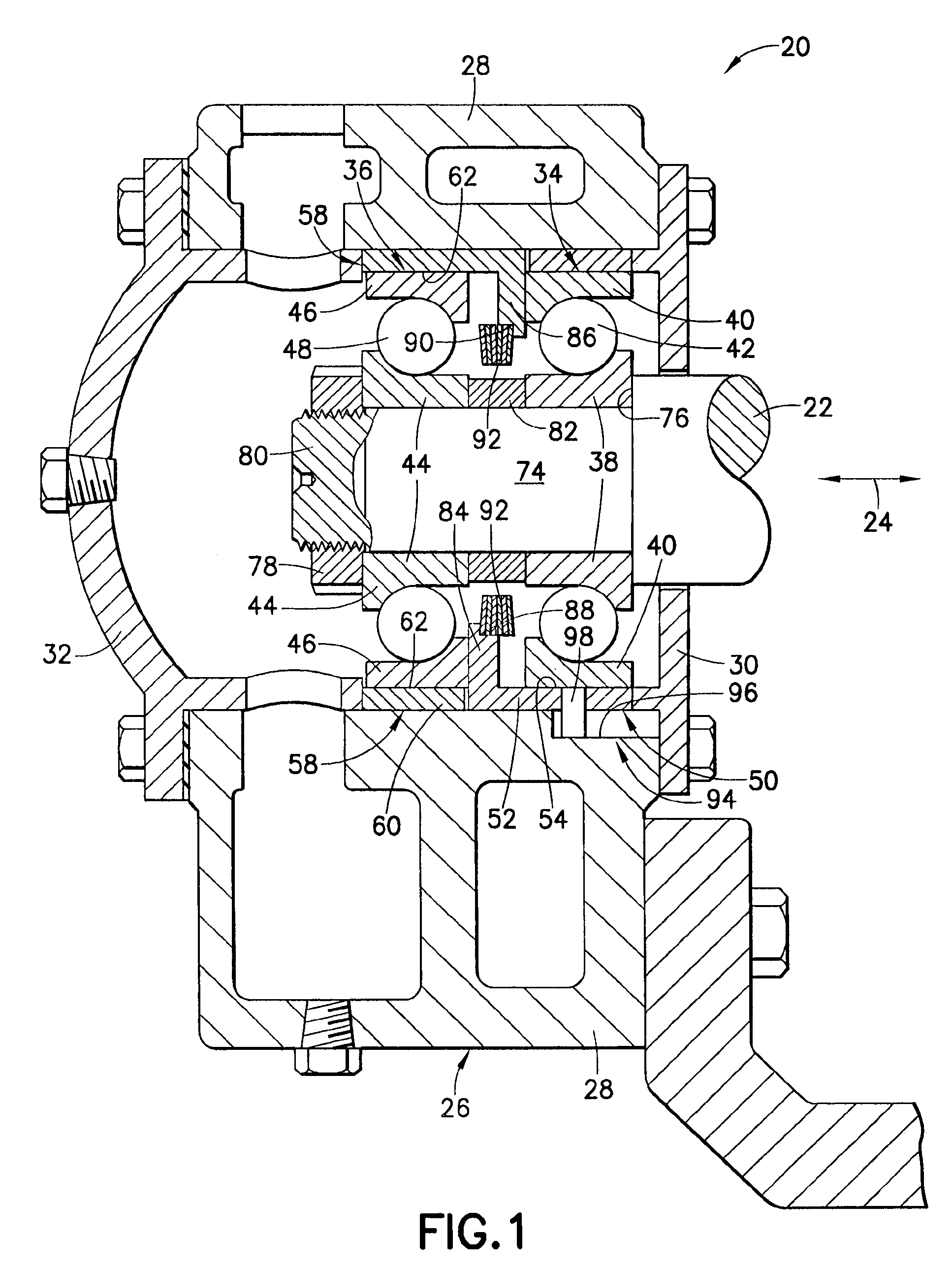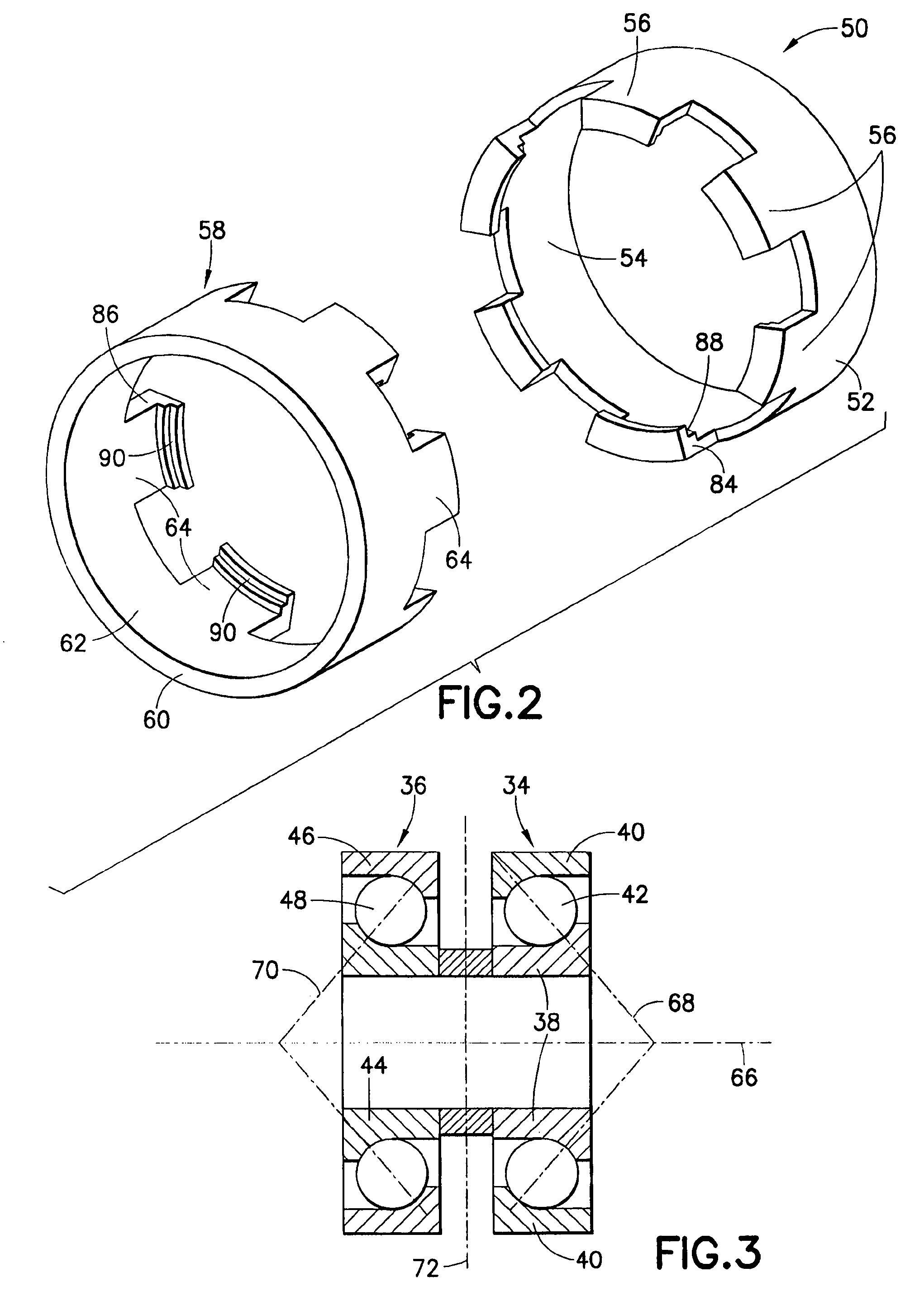Bearing preload cage assembly
a preload cage and bearing technology, applied in the direction of bearings, shafts and bearings, rotary bearings, etc., can solve the problems of individual bearings not being able to tolerate thrust loads, accelerated wear or fatigue failure of cages, and damage to bearings
- Summary
- Abstract
- Description
- Claims
- Application Information
AI Technical Summary
Benefits of technology
Problems solved by technology
Method used
Image
Examples
Embodiment Construction
[0057]Turn now to the drawings and, initially, to FIG. 1 in which is shown, diagrammatically, an elevation cross section view of a bearing preload cage assembly 20, incorporating features of the present invention, for rotatably supporting one end of a shaft 22 subject to axial loading as depicted by a double-headed arrow 24. Although the present invention will be described with reference to the embodiments shown in the drawings, it should be understood that the present invention can be embodied in many alternate forms or embodiments. In addition, any suitable size, shape or type of elements or materials consistent with the invention could be used.
[0058]The bearing preload cage assembly 20 includes a bearing housing 26 including a main housing member 28, a first supporting member 30 which is, in actuality, an inboard bearing end cover fixed to the main housing member, and a second supporting member 32 which is, in actuality, an outboard bearing end cover fixed to the main housing mem...
PUM
 Login to View More
Login to View More Abstract
Description
Claims
Application Information
 Login to View More
Login to View More - R&D
- Intellectual Property
- Life Sciences
- Materials
- Tech Scout
- Unparalleled Data Quality
- Higher Quality Content
- 60% Fewer Hallucinations
Browse by: Latest US Patents, China's latest patents, Technical Efficacy Thesaurus, Application Domain, Technology Topic, Popular Technical Reports.
© 2025 PatSnap. All rights reserved.Legal|Privacy policy|Modern Slavery Act Transparency Statement|Sitemap|About US| Contact US: help@patsnap.com



